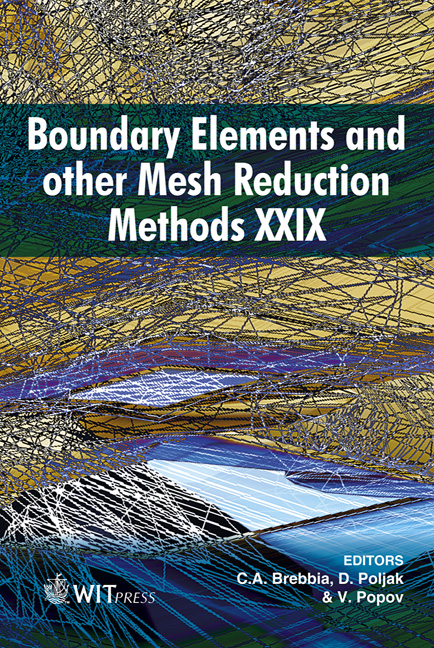The Analysis Of TM-mode And TE-mode Optical Responses Of Metallic Nanostructures By New Surface Integral Equations
Price
Free (open access)
Transaction
Volume
44
Pages
7
Published
2007
Size
1,081 kb
Paper DOI
10.2495/BE070281
Copyright
WIT Press
Author(s)
J.-W. Liaw
Abstract
Two sets of new surface integral equations, based on the Stratton-Chu formulation, are developed to analyze the interactions of an incident electromagnetic wave with a 2D metallic nanostructure for the transverse-magnetic (TM) mode and the transverse-electric (TE) mode, respectively. For the former, the surface integral equations are in terms of the surface components of the tangential magnetic field Hz, the normal displacement field Dn, and the tangential electric field Et. As to the latter, the equations are in terms of the surface components of the tangential electric field Ez, the normal magnetic flux density Bn, and the tangential magnetic field Ht. The numerical results show that for TM mode a standing wave pattern is observed on the backside of a metallic nanoscatterer with a size of several hundreds nanometers, which is caused by two surface plasmon waves creeping along the boundary clockwise and counterclockwise. However there is only a shadow zone on the backside of the metallic scatterer for TE mode. Keywords: surface plasmon resonance, surface plasmon wave, metallic nanostructure, transverse magnetic mode, transverse electric mode, surface integral equations. 1 Introduction Recently a new topic-plasmonics attracts much attention in nanooptics [1–4]. It is concerned with the interaction of light with metallic nanostructures. Because of the free electrons in metals, the permittivity of metal (e.g. Au and Ag) is not
Keywords
surface plasmon resonance, surface plasmon wave, metallic nanostructure, transverse magnetic mode, transverse electric mode, surface integral equations.





